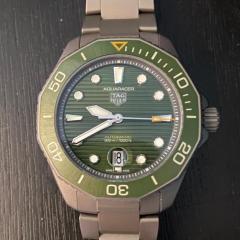Open a Tag Heuer Aquaracer 300 case back
-
Recently Browsing
- No registered users viewing this page.
-
Topics
-
Posts
-
By rjenkinsgb · Posted
Again, EDTA solution as I mentioned above, or Evaporust. They attack oxides but not good metal. After some hours, all the rust should have gone. -
Hi How can I clean this watch case rubber ring? It got the melted gasket on it...
-
By Sebastiaan · Posted
Thank you for the reading material -
By watchweasol · Posted
Hi one assumes by the addition of the pictures you have the technical sheet for this watch. As mentioned by @HectorLooi center wheel canon pinion .take it down again and install only the parts required to set the hacking and turn the hands checking at each stage for correct operation. -
By watchweasol · Posted
Hi if it is a Swiss made watch badged by ingersoll (eubauches) ther is likely a makers mark and number under the balance that may help . If you open it up and post a picture of the movement plus Any numbers.
-



Recommended Posts
Join the conversation
You can post now and register later. If you have an account, sign in now to post with your account.
Note: Your post will require moderator approval before it will be visible.